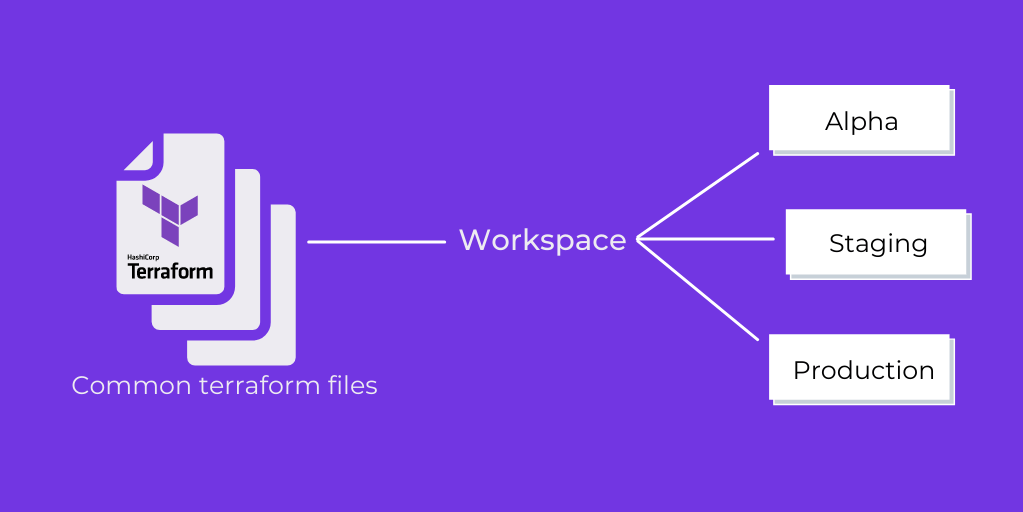Posted on 12 July 2021, updated on 14 March 2023.
Managing different environments without duplicating your Terraform files allows you to clearly separate your different env and avoid confusion between them. If you are interested in Terraform for your new project, you can start learning about terraform for Kubernetes for GCP, or for AWS EKS.
Main utilization of Terraform workspaces
Since version 0.10, Terraform workspaces allow you to manage different environments for your infrastructure without having to duplicate your configuration files in separate folders. For example, if you have one cloud project per environment (development, staging, production), terraform workspace can help you manage the resources for each project in a seamless way so that each project will get the same configuration without sharing any resources.

Each workspace will use the same .tf configuration files, but different instances of your resources will be created independently by the workspace; their state will only depend on the workspace you’re in. Therefore, you can work seamlessly between your development environment and your production environment without worrying about overlapping or conflicts between the resources of each environment.
Even if the .tf configuration files are common between your environments, you can still introduce customization depending on the workspace you’re in. We’ll tackle this part in section 3 of this article.
Setup workspaces in Terraform
To create the workspace alpha, simply use the command below; this will initialize your new workspace alpha.
terraform workspace new alphaTo get the list of your different workspaces:
terraform workspace listIf you want to switch between workspaces, use:
terraform workspace select <workspace_name>Finally, to delete a workspace, simply use:
terraform workspace delete <workspace_name>When you’re working in a workspace, the resources created, destroyed, or changed by your .tf apply will be independent of the different environments managed by your workspaces.
⚠️ When working with workspaces, you might want to pay attention to which workspace you’re in before applying changes. Usually, before validating a terraform apply, you will see the following line showing which workspace you’re in.
Do you want to perform these actions in workspace "alpha"?To know which workspace you’re on currently, use:
terraform workspace showAdding customization depending on the workspace
You can use the ${terraform.workspace} sequence to introduce differentiation between your resources. This can be useful if you need the same structure for all environments but for some reasons (cost, practicality), you want to differentiate some resources between the workspaces.
Example 1:
Suppose you are using a CloudSQL database in your project. For cost reasons or else, you might want this database to be highly available for your production environment but not for the rest of them.
In your resource block declaration of your sql.tf file, you can simply add this line to differentiate your databases according to the workspace/environment:
high_availability = (terraform.workspace == "production") ? true : falseExample 2:
Suppose you want to add a resource in only one environment (here, alpha), you can add a count condition at the beginning of your resource block:
count = (terraform.workspace == "alpha") ? 1 : 0You can also transform this condition if you want the resource to be in each environment except for alpha:
count = (terraform.workspace == "alpha") ? 0 : 1Customization when using multiple workspaces should be used cautiously and sparingly. If you are starting to customize every resource of your infrastructure with different options, you might need to separate your files to avoid confusion. Terraform workspaces come in very handy but do not fit all use cases 😀
I hope you found this article useful to learn how to manipulate Terraform workspaces to manage different environments for your project. Do not hesitate if you have any topics you would like to hear about from us! If you want to learn more about Terraform, you can read our article about resource manipulation in a workspace!

